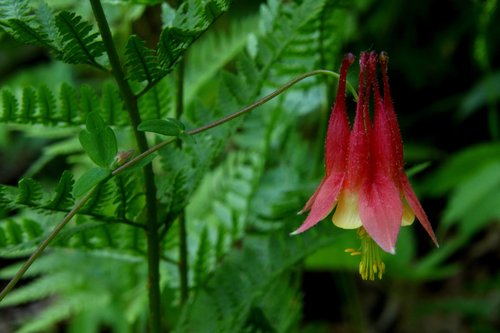Finding white-tailed deer fawns is a common, deliberate action after Memorial Day by some outdoors recreationalists.
Others--hikers, hunters, pickers, bikers, and runners--imply come upon a quiet baby deer, sometimes just hours old and begin to wonder were mother whitetail is.
Nearby usually, in sight of the action sometimes, or even within detection by her sophisticated olfactory system.
Left stranded is not likely. Even so there is nothing we could or should do in most cases. Grab the photo, fawn only, and walk away or simply admire for a few minutes, watching movements, breathing, twitching and then leave. No touchy, feely goings on.
When the DNR captured fawns during a deer-CWD study they wore fawn gloves and covered the fawn’s face with a cloth. They talked with a new baby voice.
Another reason for being extra distant has cropped up recently: We carry diseases and so do deer and each could transfer to the other. Check out what’s now know about COVID-19.

There is nothing a person has that the fawn wants, certainly not grass or a dandelion flower. As the song suggests, “Walk on by.”
Still, wildlife biologists, including Travis Anderson, Wisconsin Department of Natural Resources manager in Iowa and Lafayette counties, gets calls and more calls, about stranded fawns and other wild babies. Leave them be, too.
A lumberman had his mother call and ask how to deal with some baby gray squirrels that came down with the tree being cut. The advice was to move them aside, on a slab of bark or wood with a vegetative blanket and chances are they would be moved by the parent well before the dark of night. They were, and probably to another nest, by the mother gray squirrel.
A neighbor stuck two photographs from a trail camera on a package platform beside my mailbox. The resident noticed a badger digging, set up a trail camera, and soon after had several photographs of three small badgers. They were never seen directly and there was no likelihood of handling them. No one could be that reckless, or could they?
Capturing and keeping wildlife is illegal, as well as dangerous.

Some young fox squirrels, years ago, were making a habit of visiting our farmyard corn crib containing ear corn but open enough to allow good air circulation to dry the corn and dry it again after rain or snow fell. Each time I walked past the crib one squirrel in particular would jump from the crib, land a distance away, and then race back to the woods.
Being a young farm boy in the 1950s, I thought it would be keen to catch one, but had not thought about the next move. With leather gloved hands I was ready the next time to make an outfield catch as Foxxy came flying through the air. All worked perfectly until the sharp teeth bit through the leather glove and into the palm of my right hand. The fingers of the glove filled with blood, the squirrel jumped away after spoiling a great catch. There was no trip to the country doctor or even returning to the farmhouse to explain the scenario to elders.
Wildlife is best left wild.
Nearing the end of the spring turkey season, however, 34,985 wild turkeys were legally taken into possession and registered by May 18. The spring season is now closed and the final tally will be available shortly.
Wally Banfi, at Wilderness Fish and Game in Sauk City reported that bluegills and walleyes, also bass and some muskies, have been taken from the Madison chain of lakes.. “Morel pickers ended their season by bringing in some large, but extremely fragile, fruiting bodies to go along, mostly, with a season of disappointments.
Looking forward, mushroom pickers might consider equipping themselves for a foray by getting a roomy backpack, one that a shallow, covered rectangular plastic container can slide into, and using that to contain and carry various future mushrooms.
Oyster mushrooms are usually available throughout spring and early summer. Sulphur shelf mushroom sometimes appear as early as June.
Buck deer are growing antlers, some already inches long, according to Doug Williams, at D W Sports Center in Portage. “Ticks continue to be abundant. Farmer’s corn and soybeans are up in places, but need moisture. Turkeys continue to make their presence, but not with poults.
Warm weather has improved fishing, according to Don Martin, as Martin’s in Monroe. Don’s also seen his share of fragile morels come into the store as photographs.
Kate Mosley, at Kate’s Bait near Governor Dodge State Park said bluegills are on the bite at Cox Hollow and Twin Valley lakes.
An early morning hike through a woods can be rewarding. Turkeys are still gobbling occasionally, columbine plants is blooming, along with blackberries, black raspberries and strawberries. Muskrats are active in farm ponds, and that dreaded stickseed is a foot tall, but easily pulled out before it flowers. Pulling one plant may save pulling several hundred tight-clinging seeds from sleeves in September.
Contact Jerry Davis, a freelance writer, at sivadjam@mhtc.net or 608.924.1112.





